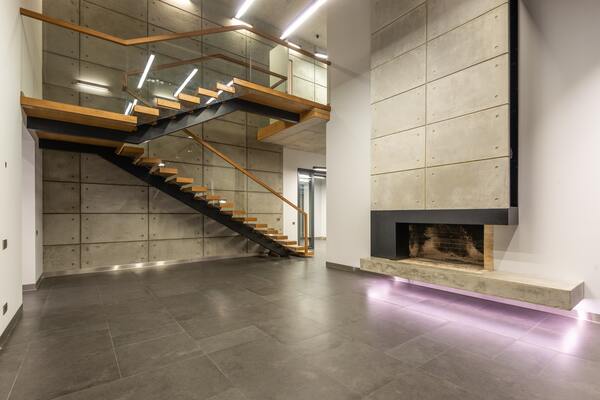When it’s time to move out, LED strip lights are easily removed because of their adhesive, semi-permanent nature. Do you dislike the way your LED strip lighting is currently set up? Do you want to replace it without affecting the paint on the wall? You can easily remove LED light strips from walls by following the instructions in this article.
How To Remove LED Strip Lights From The Wall Safely
If you want to remove your LED strips with as little risk of damage as possible, simply follow these simple step-by-step instructions.
Step 1: Preparation
- Purchase a screwdriver you believe will work.
- To shield your hands from the LED strip’s jagged edges, purchase gloves. One of the layers that make up an LED strip is metal. While removing the light strips from the walls, be careful not to touch the metal layer with your fingers.
Step 2: Turn Off The Power
It is against the law to operate any electronic device while plugged in. In order to work on the LED Strip Light without any current flowing through it, turn off the main power supply.
Step 3: Prepare The Walls
if the wallpaper has been steam-off. If you are unable to do this yourself, you can hire someone to steam it for you. Your work will be easier because you can see where the LED light strips are glued on thanks to the steam-off wallpaper.
To cut any cables that are preventing you from completing your task safely, use a sharp knife or blade.
Step 4: Remove Trimming & Border Strips
The trim and border strips that have glue on the wall hidden behind them should be located. These border pieces must be gently peeLED off with pliers to avoid causing too much damage because they will be reused in the future. When repainting the walls, you’ll get tidy cuts that produce a nice finish.
Step 5: Remove A Single Strip From A Wall
To prevent electric shock, unplug the main power supply or flip the switch on hardwired light strips before handling any electricity. Additionally, since doing so could be risky and harm the LED strip, it is best to avoid working on any electrical devices while they are plugged in.

To carefully unplug each section of the LED light strip from the others, carefully cut through any cable connections between them using a sharp knife or blade.
Avoid making too deep of a cut because doing so could harm the individual LEDs in each area, making some of the parts useless once they are taken off the wall.
Grab the edge of your LED light strip with both hands and move slowly and gently from one end of the strip to the other to remove it from the wall.
Use a flat head screwdriver to gently but firmly push down on either side of any stubborn sections before pulling them off, just like you did with the other sections earlier. If necessary, you can also use pliers in these areas.
Step 6: Remove Multiple Light Strips From The Wall
Employ a sharp blade to cut the glue. You might need to use more force to cut cleanly depending on the type of glue. Be extra cautious not to harm the LEDs or other components in each section if you are cutting through bonds that are challenging to break.
Pull backward with both hands, starting from one end of the LED light strip, and slowly and gently peel each LED light strip from the wall.
If any stubborn areas are still stuck to your walls, gently push them down with a blade or flat-head screwdriver as mentioned earlier, and then pull them back until they are completely free of your walls.
Avoid cutting too deeply because doing so could harm individual LEDs.
Before fastening new LED strips, clear the wall cavity of all old glue and debris. By doing this, it will be prevented attaching the new strips will become challenging.
The way the original LED strips were attached to the wall will determine the technique you use to remove the old glue and debris.
Step 7: Fix LED Light Strip
Find a small container to store the screws and other metal components of your LED light strip. If you intend to reattach them or use those components in another piece of equipment, this will be helpful.
Furthermore, it will assist you in keeping track of every component so you don’t misplace any before you need them. Place the container away from any potential dangers that might harm it, such as busy areas or sharp objects.
Step 8: Fix LED Light Strip If Part Of It Is Damaged
Replace any damaged parts of your LED lights with new ones that use the same type of connector if you discover that they were damaged as a result of frequent plugging.
Use electrical tape or other similar techniques to cover the gap or damage on your LED light strip for future use if the claim is not valid.
Step 9: Attach Your LED Lights Back On The Wall
When all the components are ready, attach the connecting cord to the end that faces away from where you pulled it. Then, insert the other end into an electrical outlet in your home.
If you attached the LED light strip with adhesive tape, reattach it firmly to another clean surface using some of it for an instant bond.
Can LED Light Strips Damage My Walls
Although most LED strips won’t harm your wall paint, it all depends on how they were made. Cheap adhesives applied to the strips may cause them to remove the paint along with them.
If you reside in a rented home, this might present particular difficulties. Because you altered the wall paint, your landlord might charge you.
Simply put, high-quality LED strip lighting won’t harm the walls. But there are a number of variables that can affect the scenario, including:
- Adhesive’s strength
- Wallpaper or paint’s durability
- Duration for which the LED strip light has been applied on the wall
- Surrounding environment or climate
What Type Of Wall Can Strip Lights Damage
You shouldn’t experience any issues if your wall is made of tile, wood, or plastic. Peeling off the strips won’t damage the wall and they should be fairly simple to do.
The only thing that needs to be cleaned up is any remaining adhesive buildup.
However, if your surface is wallpapered, painted, or just bare drywall, issues could develop. These surfaces are more vulnerable to damage because they consist of several delicate layers.
Wallpaper is merely paper in the end. Any kind of paper will form a solid bond when you apply strong adhesive to it. We use sellotape to seal our packages, for this reason.
But when it’s time to take your LED strips off, you’ll find it difficult to separate the two parts. There is a good chance that your wallpaper will rip, ripple, or tear.
If your wallpaper has a pattern, this will be especially frustrating because any gaps will stand out a lot more. The wallpaper’s pattern also prevents you from simply painting over the damage to hide it.
